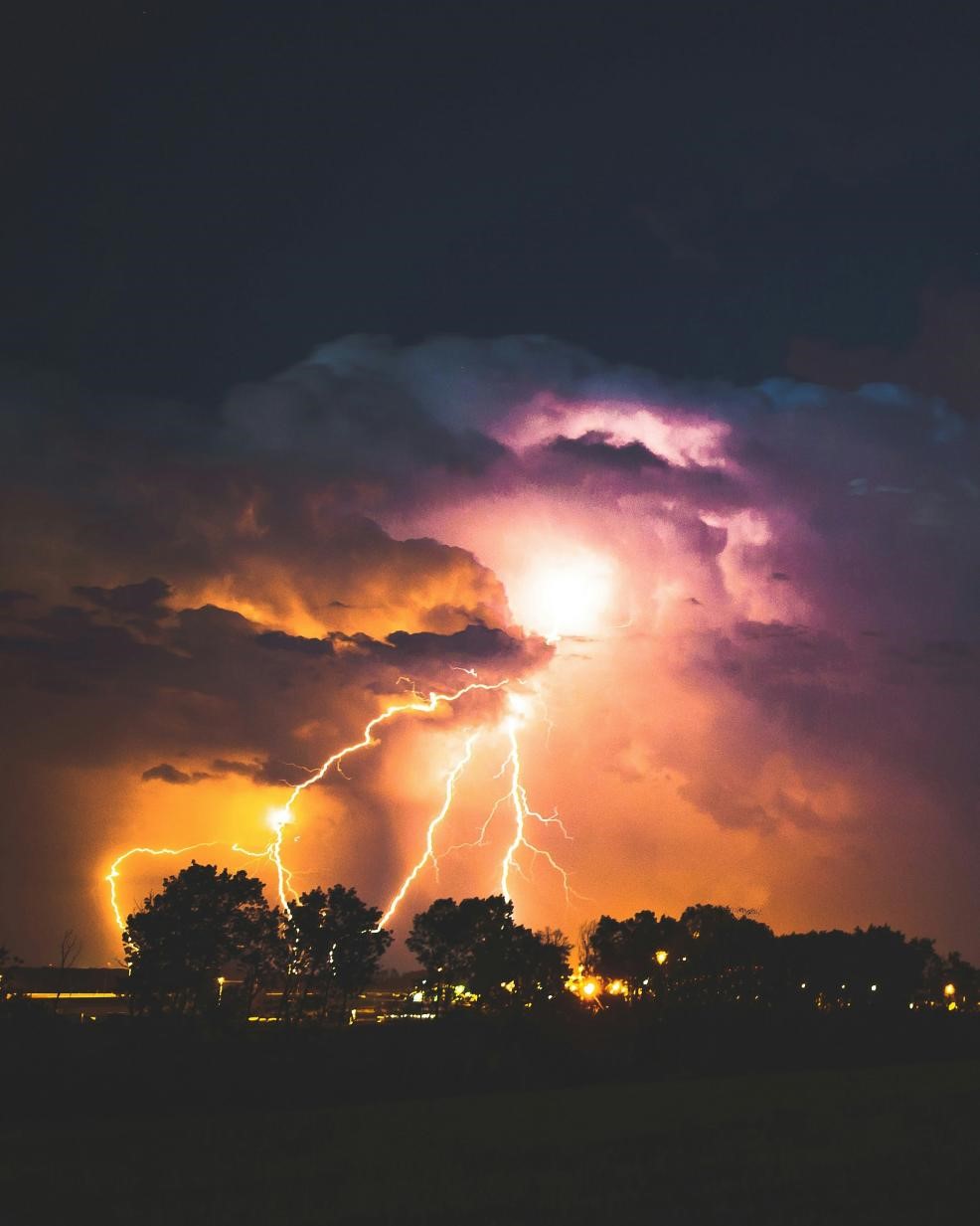New Research Reveals Mechanism Behind Lightning's Long Continuing Current, a Major Wildfire Driver
Date:2025-09-30
In recent years, wildfires have ravaged many parts of the world, causing severe ecological damage and environment impacts. Lightning has been identified as a primary culprit, specifically, the continuing current process in lightning, which serves as a critical ignition source. This continuing current can deliver persistently hundreds of amperes of charge to ground in dozens to hundreds of milliseconds, creating ideal heating conditions for combustion. But how can intracloud charge be transferred to ground over such a long duration? For decades, detecting and predicting continuing current posed a major challenge in far distance, as traditional lightning monitoring networks focus on impulsive radio signals rather than slow, steady currents.

Lightning's long continuing current, a primary driver of wildfires and explosions. (Photo by Max LaRochelle on Unsplash )
Now, a study published in Geophysical Research Letters has, for the first time, revealed the mechanism behind long continuing current through high-resolution observations and analysis of intracloud discharge channels and processes. A research team from the Institute of Atmospheric Physics (IAP) of the Chinese Academy of Sciences conducted a detailed study on cloud-to-ground lightning flashes by using high-speed video cameras and multi-frequency electromagnetic field sensors at Beijing and Lhasa.
They discovered that the behavior of intracloud negative leaders after a return stroke plays a decisive role. When these leaders reactivate vigorously, the resulting continuing current is short. In contrast, if they remain inactive, charge flows freely downward, producing a long and dangerous continuing currents.
“It’s a competition of current or charge source,” said Prof. Qie Xiushu, corresponding author of the study. “If negative leaders inside the cloud continue developing after the stroke, they ‘steal’ charge that would otherwise go to the ground. But if they stop, we see a long continuing current.”
The team also proposed that a positive charge layer at the cloud base likely fuels the growth of negative leaders. As negative leaders consume this charge, subsequent return strokes are more likely to produce long continuing current, helping explain why long continuing currents often occur following subsequent return strokes.
This new insight overturns previous assumptions that focused solely on positive leaders. “Our work shows it’s the negative leaders that matter after the return stroke.” Prof. Qie added.
The study offers practical applications for lightning-induced fire disaster prevention. Since long continuing current events are often associated with strokes having low peak current, which are easily missed. Monitoring the radio emissions from intracloud negative leaders could provide early warning of high-risk lightning.
“With advances in lightning imaging and detection technology,” Prof. Qie noted, “we may soon be able to identify the most dangerous strikes in real time. That would be a game changer for wildfire forecasting and infrastructure protection.”
Supported by the National Natural Science Foundation of China and the Chinese Academy of Sciences, this research marks a major step forward in lightning physics and risk mitigation.
As climate change increases the frequency and intensity of thunderstorms in many regions, understanding the mechanisms of lightning has never been more critical.
Citation: Feng, J., Yuan, S., Jiang, R., Wang, Y., Sun, C., Lyu, H., Sun, Z., Wang, D., Liu, M., Zhu, J.,Huang, Z., Wang, Z., Qie, X. (2025). The impact of intracloud negative branches on continuing current in negative cloud‐to‐ground lightning. Geophysical Research Letters, 52, e2025GL116612. https://doi.org/10.1029/2025GL116612
